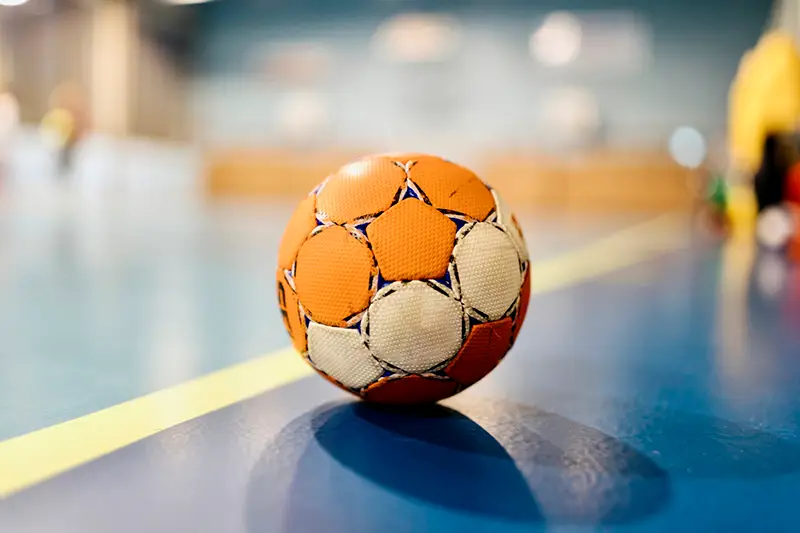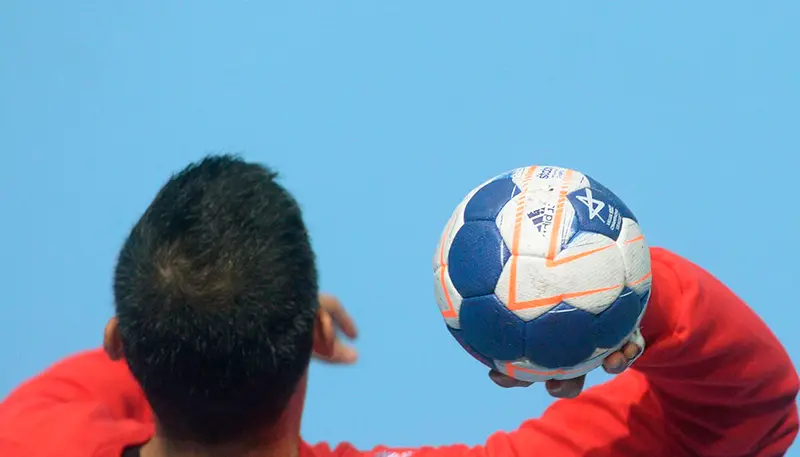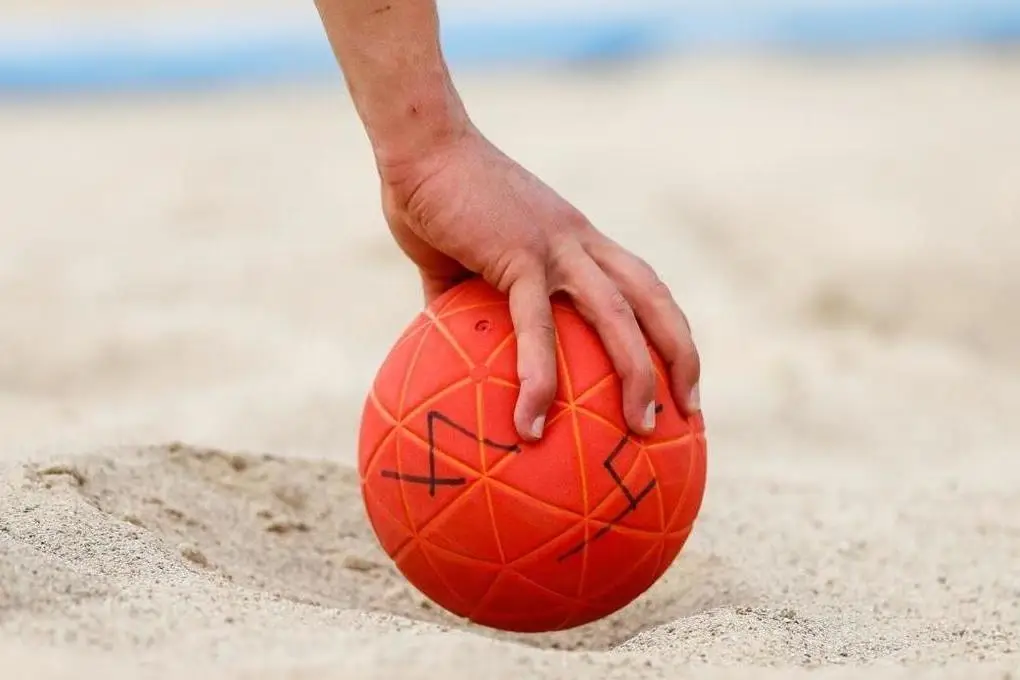You can’t mess around with a handball. If you make a mistake with your choice, the training becomes a farce. The projectile bounces around, flies past the target, knocks your fingers out and doesn’t stay in your hand. To avoid such “tricks”, it is important to understand in advance how to choose a handball. Below is a step-by-step algorithm without window dressing and advertising clichés. Only specifics and common sense.
One list – all parameters
In the process of choosing handball equipment, it is important to consider several criteria at once.
What to check when choosing a handball so that you don’t make a mistake:
- Size – whether it corresponds to the age and category of the player (see IHF classification).
- Weight – standard range according to official tables.
- Material – natural leather or synthetic depending on playing conditions.
- Surface – presence of microtexture for grip without resin.
- Player level – beginner, amateur or professional.
- Purpose – training, competition, children’s section.
- Manufacturer – compliance with IHF standards, availability of labelling.
This checklist allows you to quickly determine how to choose a handball without too much trial and error.
Size is not a whim, it’s a science
A couple of millimetres make the difference. Manufacturers divide handball equipment according to the official dimensions approved by the IHF. Each type corresponds to a strictly defined age and gender category. Handball by size is classified according to the following system:
- Size 1 (girth 50-52 cm, weight 290-330 g) – for children 8-12 years old.
- Size 2 (girth 54-56 cm, weight 325-375 g) – for girls 14+, boys 12-16.
- Size 3 (girth 58-60cm, weight 425-475g) – standard for men 16+.
Incorrect diameter disrupts technique and slows progress. Too large a projectile is often the cause of wrist injuries in young athletes. This is regularly reported by coaches. Therefore, if you want to understand how to choose a handball, start with the main thing. Get the right size according to the age and fitness of the player.
The age of the player is the key to balance
You can’t put a beginner with professional level equipment. Weight, bounce, grip – everything plays against. Handball by age is chosen based on the level of formation of muscles and motor skills. Children under 10 years old have not yet formed their hands, so professional models cause rapid fatigue and lose effectiveness in training. For this category, preference is given to softer and lighter shells with a non-aggressive texture.
Boys aged 12-15 successfully master the second size. With regular training it helps to form the correct passing and throwing technique. From the age of 16, the transition to the third size is necessary to adapt to the competitive load of the adult level.
How to choose a handball for a beginner – it is important to take into account not only age, but also muscle preparation. For a teenager who is new to the parquet, a lightweight training model, rather than an official championship ball, is suitable.
Material and its importance
 The ball is not just an implement. It is an extension of the hand, an instrument of precision and a sense of pace. The material determines grip, flight behaviour, bounce and wear.
The ball is not just an implement. It is an extension of the hand, an instrument of precision and a sense of pace. The material determines grip, flight behaviour, bounce and wear.
The leather ball is a classic. Uses natural leather, provides a perfect grip, especially when using special resin. It is suitable for professional matches and tournaments. But it quickly loses its shape when played intensively without care.
Synthetic ball – optimal for indoor, outdoor, and resin-free training. Not afraid of moisture, holds its shape longer, requires minimal maintenance. An everyday option, especially for mass training and schools.
Professional clubs often purchase both options: one for matches and one for routine training. The choice therefore depends on the purpose: competition, training, street play or hall.
Surface: grip without resin
Manufacturers treat the outer coating in different ways: rough polyurethane inserts, rubberised elements, microtexture. For beginners, models with a non-slip surface without the need to use resin are preferable. Coaches recommend these options as a starting point to develop grip without aids. Sections and schools prohibit glue – and this makes the choice particularly important.
A separate approach to training
Training models are made of durable synthetics or rubber with reinforced seams. Weight – closer to the upper limit to develop strength. Surface – reduces slippage.
Intensive training requires a hard-wearing material that retains its shape after hundreds of throws. Weak equipment reduces efficiency by almost a quarter, as confirmed by European coaches.
For throws, one model. For the street – another. High bounce hinders technique, weak bounce hinders dynamics. How to choose a handball for training – take into account the surface, the format of training and the level of the player.
Adult or child: what changes
Age affects the strength of the throw and the amplitude of movement. A child cannot cope with an adult projectile – loses accuracy.
Hand size, endurance – everything grows over the years. Going to a larger size prematurely throws off the technique.
An adult handball player will not achieve the necessary dynamics with a smaller model – timing is lost. How to choose handball equipment – take into account the physical characteristics of age, and not be guided by appearance.
Beginner does not equal inexperience
The opinion that handballs for beginners are toys is wrong. The beginner models of well-known brands are fully certified. The difference is in softness, less bounce and increased safety.
How to choose a handball for a beginner – you need to understand what skills you need to develop. They will suit lightweight models with a sure grip, reducing stress on the joints.
The Select Kids series is designed for 8-12 year olds, Kempa Tiro is often used in resin-free training.
Handball requires precision – the shell delivers results
Handball is about speed, control and marksmanship. The wrong model and the whole dynamic collapses. Teams tailor their equipment to their style of play. Minimal bounce – for control, high – for high-speed attacks.
Handball by age is selected by section coaches taking into account height, weight, level of fear and experience. Synthetic universal models are suitable for adult amateurs. On the right choice depends on technique, safety and development.
How to choose a handball: the main thing
 Handball equipment is not an accessory, but a precise sports tool. Mistakes in the choice provoke injuries, confuse technique, inhibit development. How to choose a handball is based on the parameters: age, size, level, material and purpose. Only an exact match will ensure results. Proper selection increases efficiency, reduces risk and helps you reach your potential. The right tool becomes an extension of the hand, not a hindrance.
Handball equipment is not an accessory, but a precise sports tool. Mistakes in the choice provoke injuries, confuse technique, inhibit development. How to choose a handball is based on the parameters: age, size, level, material and purpose. Only an exact match will ensure results. Proper selection increases efficiency, reduces risk and helps you reach your potential. The right tool becomes an extension of the hand, not a hindrance.
 en
en  ru
ru  de
de  ar
ar  es
es  nl
nl  hi
hi  fr
fr  it
it  pt
pt  el
el 










